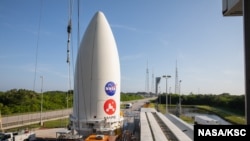In a fresh attempt to scout out signs of previous life on Mars, the United States, China, and the United Arab Emirates are sending out spacecraft to Mars, starting this week.
The unmanned spacecraft are also analyzing the area to prepare for future astronauts.
The U.S. is sending a rover named Perseverance to gather rock samples, and it will likely not return for ten years.
Each spacecraft must go over 482 million kilometers to reach Mars, after which they must leave Earth’s orbit and enter Mars’. The process of arriving alone takes at least six or seven months.
The countries' goal is to find out if Mars had any signs of previous microscopic life. As has been previously determined, Mars used to have bodies of water, so it’s possible the planet was also host to some type of life.
“Robot missions over the past decade or so have shown that Mars is not a dead, alien place as we had concluded in the late 20th century. In fact it is a world peppered with old lake beds, dried out river channels and organic material,“ said Professor Ray Arvidson, of Washington University, St Louis.
All three countries are sending out spacecraft in the same week because there is a period of only one month in every 26 months in which Mars and Earth are on the same side of the sun. When they’re on the same side of the sun, the time for travel can be reduced as much as possible.
Only the U.S. has placed a spacecraft on Mars before.







